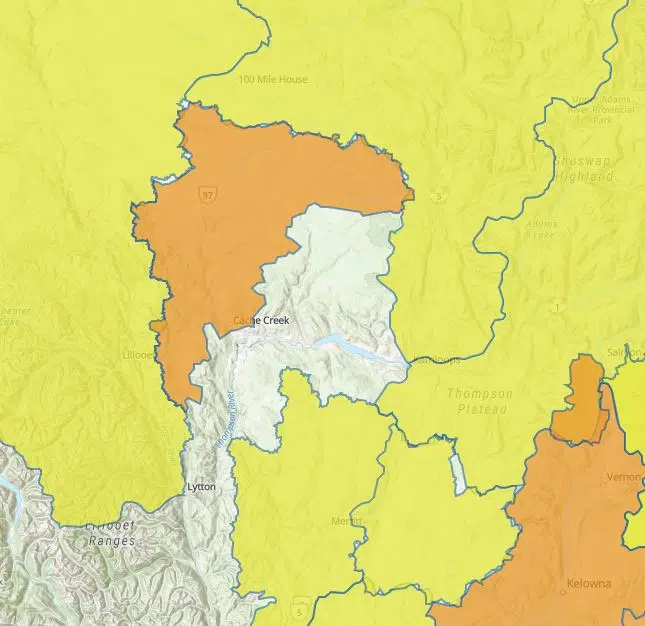
The mayor of Ashcroft says while there aren’t too many concerns about flooding in the village yet, officials are keeping an eye on for erosion along the river bank.
“If the water creeps up far enough it gets above the rocks and gravel and starts getting into the dirt and that’s where you start getting into problems because people can’t see that the banks are eroded underneath,” Barbara Roden told NL News.
“It looks fine on the surface and you get a bit too close and it just gives way because there’s nothing underneath.”
That said, Roden notes village staff are also watching for flooding along the Bonaparte River in nearby Cache Creek which joins the Thompson River in the village.
“The only time I can remember hearing about it flooding in Ashcroft was down on the little bench by the river where the River Inn Hotel is now located,” added Roden. “That flooded in the early 1970s from very high water, but then the rest of town is above that.”
“It’s nowhere near flooding that area.”
A flood watch is in place from the Bonaparte River near Cache Creek along with high stream flow advisories for the North and South Thompson rivers near Kamloops, the Nicola River near Merritt, and the Clearwater River. You can find the latest information from the BC River Forecast Centre here.
As of Friday afternoon, there was no watch or advisory issued for Ashcroft, and Roden thinks its possible that Kamloops Lake helps to slightly lower the flood risk on the Thompson River in the village.
“I think it slows down the flow of the water so that it means we don’t get the sort of cresting levels that you get up in Kamloops,” Roden said, noting the water on the river was ‘an unappetizing shade of chocolate brown’.
“The thing that we are all keeping an eye on now is the freak rain storms or prolonged heavy rain, because that can be a real game changer.”
In Kamloops, city staff are telling residents to be prepared for very high water. At time of posting, the Thompson River west of the Overlanders Bridge wass flowing at 6.876 metres, according to real-time federal data. That’s down slightly from a peak, so far, of 6.973 m that was reached on Thursday afternoon.















